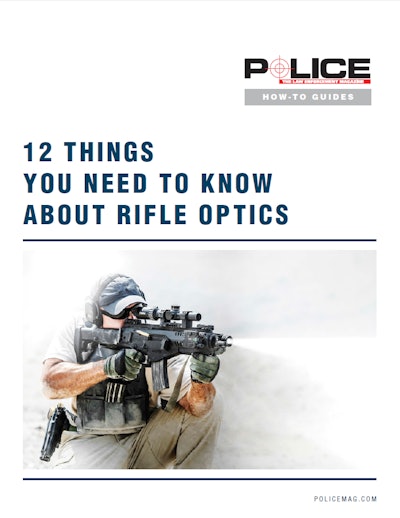
Now that many law enforcement agencies allow their officers to field rifles, rifle optics have become very common in law enforcement operations.
In order to help you decide what optic best suits your needs, POLICE Magazine spoke with some experts on the tactical operation of firearms optics. And the following are 12 things they said you need to know about these essential accessories.
1 TYPES OF OPTICS
There are two categories of firearms optics: telescopic sights and reflector (reflex) sights.
Telescopic sights, commonly known as “scopes,” are sights that use magnification to make targets appear closer to the shooter, thereby making it easier for the shooter to make a precision shot.
Reflector sights or “reflex” sights are optics that do not magnify the image of the target and feature a single point of reference such as a red dot for extremely fast sight acquisition. They are very useful in close-quarter combat, especially against multiple targets and moving targets. They can also be used at ranges beyond 200 yards by skilled shooters. One shooter who assisted with this article said he can hit a 12-inch plate about 75% of the time at 300 yards with a short-barreled 5.56mm rifle and an Aimpoint T1 with 3x magnification.
The term “reflex” sight is a shortening of the word reflector. Almost all reflex sights use a mirror and an internal light source such as an LED to reflect the image of the reticle back to the eye of the shooter. However, holographic sights first marketed by EoTech (now L-3 EoTech) use lasers to project a single point of aim onto a film enclosed inside the optic. Although they do not use reflection, holographic sights are generally classified as a type of reflex sight because they offer a single point of reference for quick target acquisition.